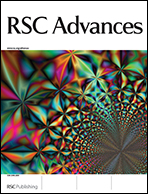Accumulation of α-synuclein in Lewy bodies is believed to play a critical role in the etiology of Parkinson's disease (PD). Inhibitions of the overexpression and the aggregation of α-synuclein in vivo are thus effective in treating PD. Trehalose, a disaccharide present in many non-mammalian species, can protect cells against various environmental stresses and prevent the deactivation of proteins. We here report that when co-incubated with trehalose, wild-type α-synuclein in vitro preferred assembling into the large amorphous aggregates instead of the neurotoxic β-sheet-rich fibrillar aggregates during the prophase incubation. On the other hand, the large amorphous aggregates could be disassembled into the small amorphous particles, even into the random coil structure after long time of incubation. In addition, it was demonstrated that trehalose at concentration lower than 1.0 mM inhibited the overexpression of wild-type α-synuclein in the transduced PC12 cells and protected the cells against the neurotoxicity induced by α-synuclein. Trehalose might be useful for treating PD in vivo, which are waiting for further verification.

You have access to this article
 Please wait while we load your content...
Something went wrong. Try again?
Please wait while we load your content...
Something went wrong. Try again?


 Please wait while we load your content...
Please wait while we load your content...